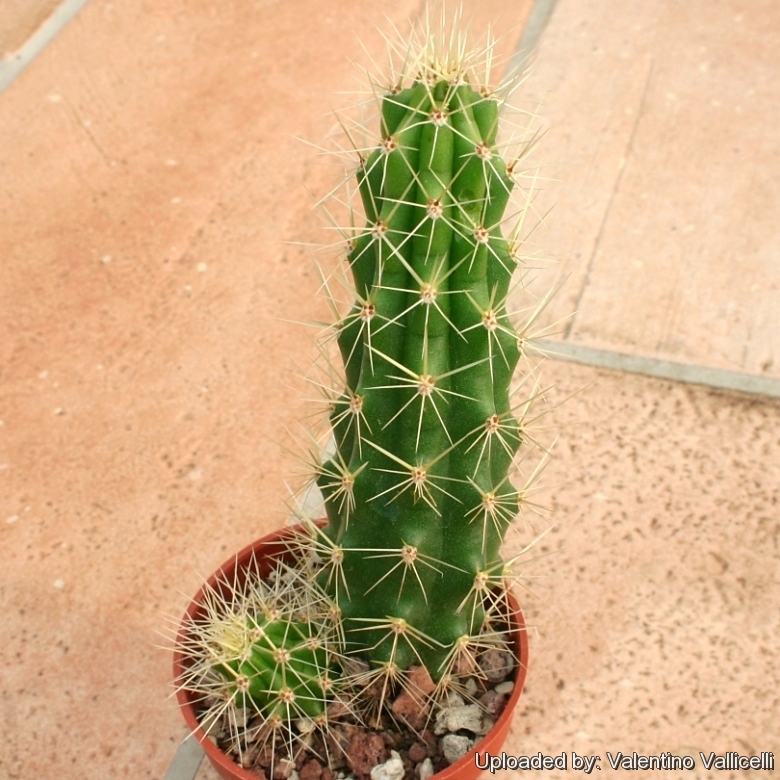Accepted Scientific Name: Echinocereus pensilis (K.Brandegee) J.A.Purpus
Monatsschr. Kakteenk. xviii. (1908).

Cereus pensilis (Echinocereus pensilis) Photo by: Valentino Vallicelli
It is a very untypical Echinocereus that does not take on the usual hedgehog shape. It is long and vine-like with slim, pendant sprawling stems, usually tangled with many branches up to 250 cm long rare in cultivation; it bears beautiful scarlet flowers definitely a hanging basket job!
Origin and Habitat: This plant is more commonly known with it older name, Morangaya pensilisSN|8516]]SN|8516]], in praise of two well known American collectors, Ed Gay and Reid Moran.
Synonyms:
Common Names include:
ENGLISH: Snake Cactus, Pitayita Hanging Cactus
SPANISH (Español): Pitayita
Description: Mostly clumping, basally branching vine-like stems at first erect, but then arching and prostrate or hanging, usually with aerial roots.
Stems: Cylindrical tapering toward the tips, up to 2 m long or more, 2,5-4 cm in diameter.
Ribs: 8 to 10 low, rounded and tuberculate..
Areoles: 1-2 cm apart.
Spines: Yellow that turn reddish as they age needle-like; 1 central, 1-2.5 cm long; 6 to 10 radials more or less radiating, on young areoles, older can have much more (as much as 70 or more).
Flowers: Orange or reddish at the stem tip or on older parts, 5-7 cm long, 4-5 cm in diameter, tubular to narrowly funnelform. The areoles of the tube and ovary, with white or yellowish wool and chestnut bristly/silky spines.
Blooming season: Flowers appear end of April to May.
Fruits: Globose to elongate, spiny, red with red pulp 1.5-2 cm in diameter.
Seeds: Black, rugose, very oblique at base.
Notes: Mexico ( Cape region – the southern tip of Baja California ), Helia Bravo-Hollis reports it from Nayarit and Jalisco) TL: Mexico, Baja California Sur, Sierra de Laguna, T.S Brandegee 246, Jan/Feb. 1890
Habitat: Grows in mountains and rocky hills.
Cultivation and Propagation: This cactus is rare in cultivation, it is among the easiest species to grow, flower and propagate. Indicated for full sun exposure. Water regularly from March to October. Rot prone in winter, it needs good drainage, It should be kept in a cool place during winter rest (it can briefly tolerate temp. as low as -7°C). Without this cool winter period these plants normally won't get many buds. Cascading, clustering, great for a hanging display. Stems may possibly become purple and limp in winter, but revitalize in early spring.










